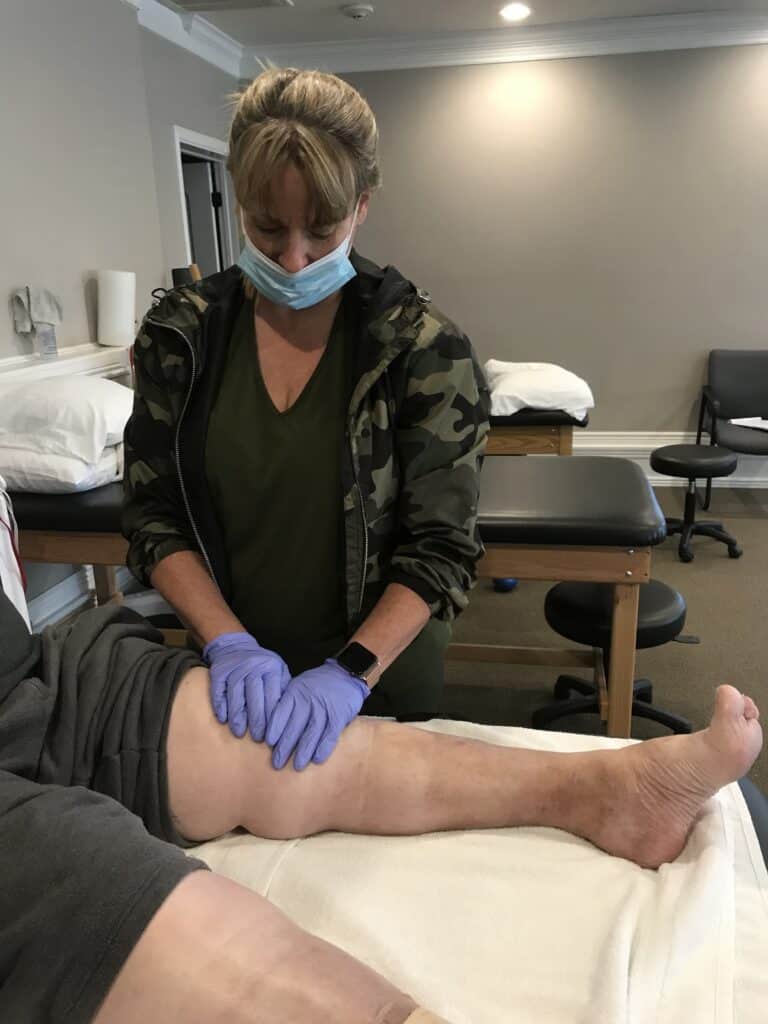Lymphedema Treatment in Chubbuck
What Is Lymphedema?
Lymphedema is a swelling condition in a person’s extremities. It usually happens in just one leg or arm, but it can in some circumstances impact more than one limb at the same time. This swelling happens due to an impairment of lymphatic system flow. The lymphatic system runs throughout the entire body, absorbing and then rereleasing fluids into the bloodstream.
What Does It Look Like?
Mild cases of lymphedema are felt more than seen. These feelings include heaviness, shooting pains, warmth, tingling, and/or tightness. Remember, most cases impact one limb but not the other. These feelings can happen before there are any obvious visual signs of swelling.
Visual symptoms other than swelling also exist. A lowered ability to feel or see tendons and veins in an extremity can be a warning sign. Tight clothing or jewelry can also be an indicator. So too can redness of the skin. The skin might be slightly puffy, and joints might be tight or demonstrate less flexibility than usual. The asymmetrical appearance of two extremities can also happen.

What Causes Lymphedema?
Most global cases of lymphedema happen because of a parasite infection known as filariasis. However, inside the United States, the prominent cause is breast cancer surgery followed up with radiation treatment. It is a condition some are just born with. Cancer patients who had surgery on parts of their lymphatic system are at risk.
Different Types Of Lymphedema
Primary lymphedema can happen as a rare and inherited condition where lymph vessels have anatomical abnormalities. Secondary lymphedema occurs due to identifiable damage or obstruction in lymph nodes and vessels that were otherwise functioning normally previously.
How Is It Treated?
Lymphedema doesn’t have a cure. However, treatment possibilities exist, and they emphasize pain management and swelling reduction. Early stages of the disease can be treated non-surgically with physical therapy, medication and diet, although more advanced cases might require surgical intervention to remove the most swollen parts of the patient’s lymphatic system.
Exercise and physical therapy are frequently used. Gentle contractions of impacted muscles can help lymph fluids drain and prepare patients for handling daily life activities.
Wrapping impacted limbs helps lymph fluid flow back into the trunk of the patient’s body. Massage-work can do the same thing in the hands of a specialist, although it should be avoided in cases of skin infections or active blood clots.
Pneumatic compression and compression garments are also possibilities under the supervision of a doctor. CDT, or complete decongestive therapy, is possible for some patients, but not for those with other conditions.
Need Help?
Do you need help with lymphedema? Do you help take care of someone that needs treatment for this debilitating disease? Contact us right away to see how our physical therapy services can help. We’re available at (208) 417-0011. We want to help you restore your quality of life!

